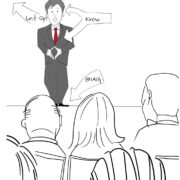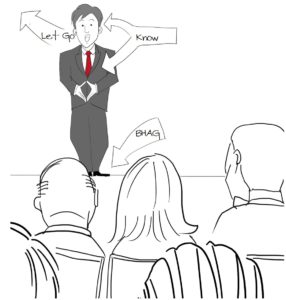A Bird in Hand

A Bird in Hand.
“What do you want, birdie?”
“What exactly are you saying little birdie?”
“Are you hungry, or just dazed birdie?”
She just stayed there atop my index finger and kept blinking, opening and shutting her mouth as though she were talking to me. There was no sound but I could swear that she was trying to say something to me.
It was a full three and half minutes since I’d rushed out of a classroom full of a hundred and fifteen teachers-in-training at the Presidio in San Francisco. We had spent nearly four days conversing about mindfulness, emotional intelligence and compassion for leaders when I heard this bird crash into the huge glass windows and drop into the bushes.
There was another classmate in that room, Ahmad Faiz Zainuddin from Indonesia, who I first asked to go help the birdie in distress but he’d hesitated and I’d jumped into action instead. He happily took pictures with his phone.
When I reached her she’d just stood up, and was looking really lost. I slowly moved towards her and thought of stroking her with the back of my fingers. Surprisingly, she easily let me. That gesture, for me, usually worked with dogs and I was awed that a little bird fell for it too. I turned my hand around wanting to pick her up and carry her into the sunshine when, deftly, she hopped onto my fingers and stayed there.
A good number of my classroom companions were watching and I was amazed that such a tiny bird was offering me her trust. I’d seen dogs, cats and sometimes, even, butterflies endear themselves to people but a bird? This was a first! I felt honored and extremely responsible at the same time. I had to do something about a bird in need. Maybe the crash into the glass pane had numbed her such that she had no idea what she was doing. Maybe she was thirsty, hungry. Where could I find an edible worm instantaneously? There was nothing around except beautiful sunshine, a breeze and a lot of green fauna. Then, after nearly three and half minutes of chatting soundlessly with me she, suddenly, upped and flew away.
Today completes exactly sixty days since that beautiful experience. For every single moment since that day I have been wondering, why did that happen to me? What was the bird trying to say? Why me? Was there a message in that incident? What is the meaning of all this? Why would such a scared, helpless, beautiful creature trust me?
Thus, this morning I sat myself down, quietly and firmly, for a very long time. I ran through my head all the images of that moment and the millions of thoughts before and after that. I browsed through all little and big conversations I’d had with friends to come to some conclusion about the bird. The billions of neurons in my head, heart and gut needed to know. I needed to know. I kept the pressure on, upon myself, for hours. I’d heard and I know that insightful answers evolve when you think really hard about something or don’t think about it at all. Finally, after a long time thought integration occurred and I had an answer. Aha!
The answer was that I did not need to have an answer. I do not need to know the answer even today. I can live without giving meaning to every incident, every conversation. Not everything, every being, every perspective that surrounds me needs to be known by me, thus controlled by me. In fact, isn’t it I who constantly reminds myself to just “be.”
All experiences are journeys of exploration and they do not need to have a singular, intelligently defined destination. In fact, the very reason I was in that class with a hundred and fifteen others was to explore mindfulness not knowledge and intelligence. Being mindful means being aware, awake and open-hearted to everything; open to constantly changing and multiple perspectives from all directions, all the time.
Thus, I step back from wanting to give shape and meaning to a moment of life; a moment that a bird spent with me. I can live in a space and time that is changing and ambiguous because it keeps me vulnerable and open to life itself. I think that is what the little bird told me that October morning in beautiful San Francisco.
I also think that I ought to stop theorizing about a bird in hand. I need to surrender to not knowing the how and why of a little bird’s momentary trust in me. I ought to let a bird hand be, just that, a bird in hand and not worry about the hidden two in the bush.
Raju Mandhyan
You Tube Videos : https://goo.gl/3HEepD
Books on Amazon : https://goo.gl/Uabo7f




